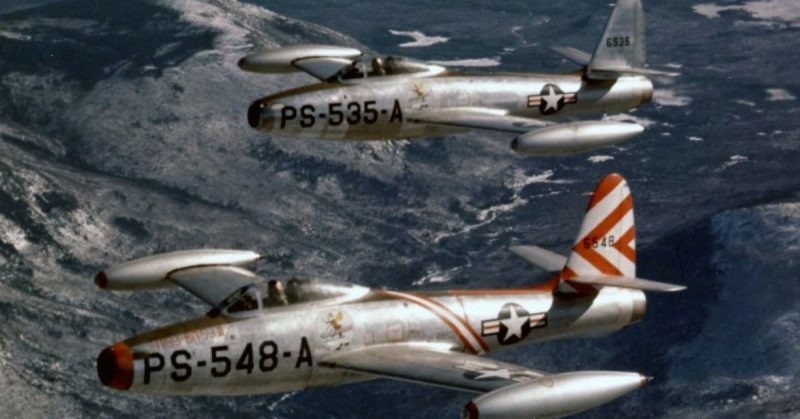During the dying days of WWII, both sides fielded jet fighters, but they were experimental aircraft. Propeller-driven fighters still dominated the skies.
The first jet versus jet air war came five years later when war broke out in Korea.
Jets Versus Propellers
In the summer of 1950, the Korean war began. The nation was already split into the communist North Korea and capitalist South Korea. The North’s military advanced across the border, hoping to reunite the peninsula under their rule.
Diplomatically, the situation quickly escalated. United Nations forces, primarily made up of American troops and equipment, were sent to support the South. Chinese troops crossed the border to fight for their North Korean allies.
At first propeller-driven fighters such as Lavochkin La-7s and F-51 Mustangs took to the air on both sides. Then the United States Air Force (USAF) brought in the F-80. It was a straight-winged jet that had been developed too late to be used in WWII. Five years later, it was virtually obsolete by American standards but was powerful enough to dominate older style aircraft.
Other planes followed. On July 3, 1950, US Navy jets went into action for the first time, in the form of F9F-3 Panthers on an escort mission.
For the first six months of the war, the UN had the edge in the skies. Until the end of October, they ruled the air over Korea.
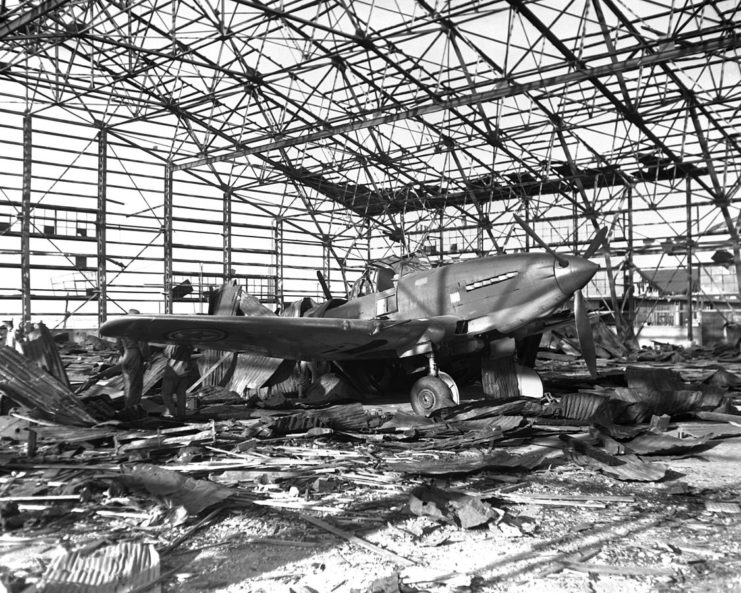
Enter the MiG
On November 1, 1950, six swept-wing jets attacked a group of USAF Mustangs. The aircraft were later identified as Russian-made MiG-15s.
The Mikoyan-Gurevich MiG-15 was a formidable fighter that utilized the technology of several different countries. Its swept wings were based on research captured from the Germans at the end of WWII. Its RD-45 engine was an illegal copy of Britain’s Rolls-Royce Nene turbojet. The whole was completed by Russian engineers and flown out of bases in China, to avoid UN attacks on North Korean air bases.
At the time, Stalin was making a point of not becoming involved in the war. The official story was that Russian advisers were helping the Communists, but no Russian troops were in the area. As the war progressed, it became apparent that some planes were flown by Russian pilots, as they reverted to their native language over the radio. South Korea and her Allies chose not to challenge the deceit. The risk of bringing Russia fully into the war was too high.
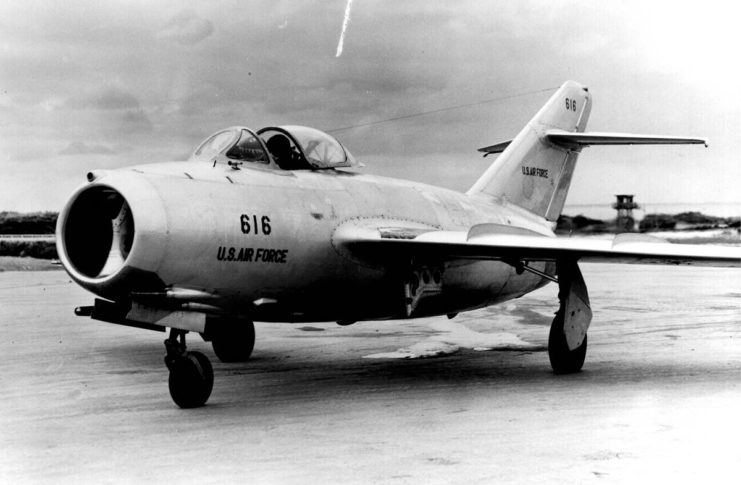
The First Jet Fight
The first jet versus jet fight took place on November 8, 1950.
Four MiGs flew across the Yalu river into South Korean airspace. There, they were challenged by a USAF group of F-80C fighters, from the 51 Fighter-Interceptor Wing. Lieutenant Russel J. Brown got the historic first fighter versus fighter kill when he shot down one of the MiGs.
Not to be outdone, the US Navy had its own first jet versus jet encounter the next day. Lieutenant Commander W. T. Amen shot down another MiG-15.
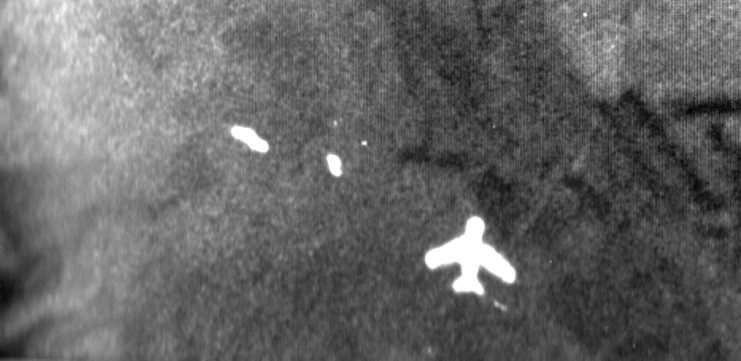
America Ups Its Game
Despite their high-status victories, UN forces were challenged by the presence of the Russian jets. The MiG was a powerful aircraft which could match almost anything the western powers had. USAF B-29 bombers, previously able to fly with impunity, were vulnerable to attacks by MiGs. The MiGs also defended North Korean bases when they were attacked.
UN air superiority was under threat. Something had to be done.
In response to the events of November 8, the USAF ordered the 4th Fighter Group to travel from the USA to Korea. The unit was equipped with F-86A Sabres, the most advanced fighter in the American arsenal. It was soon followed by the 27th Fighter-Escort Wing, flying F-84 Thunderjets.
Individually, MiGs performed slightly better than that particular type of F-86. The Sabre had a stable gun platform, but the MiG had heavier weaponry.
Despite the disparity, the Americans usually performed better in the fighting. The Communists flew in formations of 20 or more aircraft while the western forces used agile four-man wings.
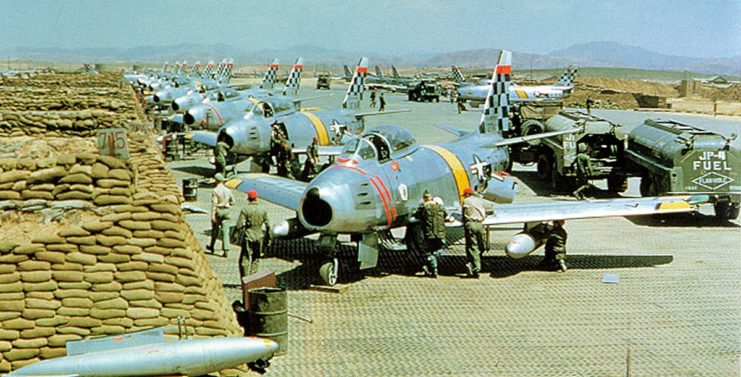
A Battle for the Skies
During the three years of the Korean War, the UN forces fielded different jets.
The Republic F-84 Thunderjet served as a fighter-bomber. Its pilots took down several MiGs, the first after the MiGs interrupted a bombing attack on January 21, 1951.
The Royal Australian Air Force entered the war with American-made propeller-driven F-51 Mustangs. Finding themselves challenged by the MiGs, they switched to the Gloster Meteor F.8; a British jet fighter descended from the only jet to see action in WWII. However, it was no match for the MiGs.
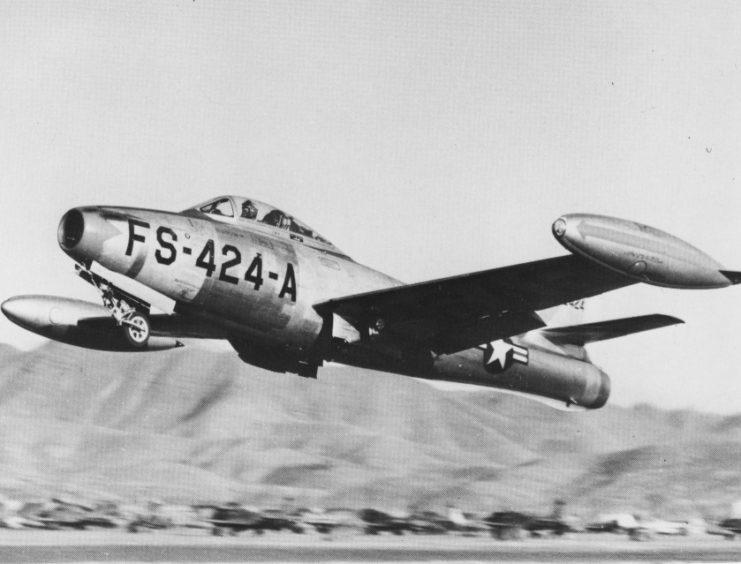
More Than Just Jets
Despite the prevalence of jet fighters, the propeller-driven craft still played a part. The most successful British aircraft was the Royal Navy’s Hawker Sea Fury. Of all the non-American planes, it destroyed the most Communist ones, despite being propeller-driven. Sea Furies even destroyed several MiGs.
Over the course of the conflict, USAF Sabres shot down 757 planes for only 103 losses. Good tactics had proved as important as advanced technology, giving the Americans an edge.
It was not the only lesson learned from the war. The age of straight-winged jets had gone. The F-80, F-84, and Meteor were about to be consigned to history, while swept-winged aircraft came to the fore.
The Americans had proved the power of the USAF and the Russians had proved the power of the MiG. The jet age had arrived.
Sources:
Francis Crosby (2010), The Complete Guide to Fighters & Bombers of the World
Richard Holmes, ed. (2001), The Oxford Companion to Military History
